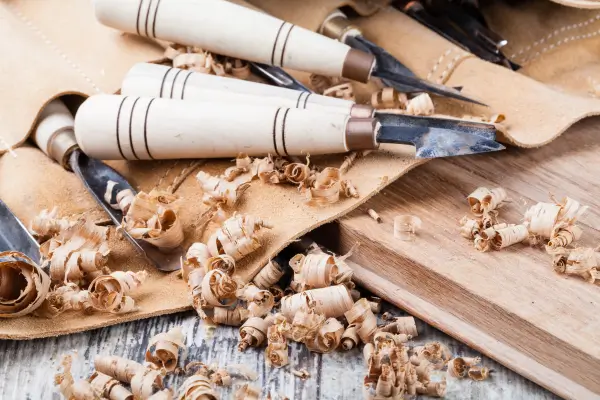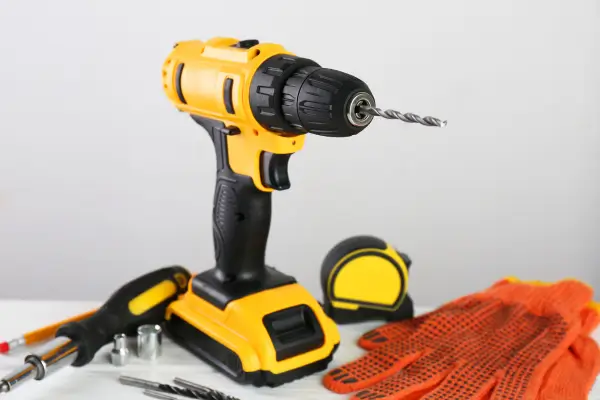Essential woodworking joints are the foundation of every strong and stylish project. They ensure durability, stability, and a professional finish for furniture and crafts.
Mastering these joints is key to improving your woodworking skills. From simple butt joints to intricate dovetails, each type serves a unique purpose.
With the right techniques and tools, beginners can create sturdy and beautiful pieces. Let’s explore the most important joints to elevate your projects.
Start practicing today and build confidence in your woodworking journey. Precision and creativity will guide your way!
Why Woodworking Joints Matter
Wood joints play a crucial role in structural integrity and design. Using the right type of joint improves:
- Strength and Stability – Ensuring the structure holds together securely.
- Aesthetic Appeal – Creating seamless connections that enhance the project’s design.
- Efficiency in Assembly – Making the building process easier and faster.
- Longevity – Preventing warping, splitting, or breaking over time.
Now, let’s dive into the most essential woodworking joints every beginner should know.
1. Butt Joint – The Simplest Connection
What Is It?
A butt joint is the simplest type of woodworking joint, where two pieces of wood are joined together by butting their ends together.
Where It’s Used?
- Simple frame constructions
- Basic wooden boxes
- Temporary woodworking projects
Pros:
- Easy to make with minimal tools
- Quick assembly for beginners
- Works well with screws, nails, or glue
Cons:
- Weak without reinforcement
- Requires additional fasteners (screws, dowels, brackets) for strength
How to Reinforce a Butt Joint?
- Use wood glue for added adhesion.
- Add screws or nails to increase strength.
- Reinforce with dowels, biscuits, or brackets.
2. Miter Joint – The Perfect Angled Joint
What Is It?
A miter joint is similar to a butt joint but cut at a 45-degree angle, creating a clean and professional look.
Where It’s Used?
- Picture frames
- Decorative molding
- Boxes and small furniture pieces
Pros:
- Aesthetically pleasing with hidden seams
- Provides a clean finish for decorative projects
Cons:
- Weaker than other joints unless reinforced
- Requires precise cutting for a perfect fit
How to Reinforce a Miter Joint?
- Use wood glue for bonding.
- Add splines or dowels for durability.
- Utilize clamps to hold the joint tightly while drying.
3. Dado Joint – Strong Support for Shelves
What Is It?
A dado joint is a groove cut into one piece of wood, allowing another piece to fit snugly inside.
Where It’s Used?
- Bookshelves and cabinets
- Drawer dividers
- Structural supports
Pros:
- Provides strong lateral support
- Increases stability for shelving
- Reduces dependency on screws and nails
Cons:
- Requires precise cutting tools like a router or table saw
- May weaken if cut too deep into the wood
Best Practices for Dado Joints:
- Cut the groove at the correct depth (one-third of the wood thickness).
- Use a router for clean, precise cuts.
- Apply wood glue for extra bonding strength.
4. Dovetail Joint – The Classic Stronghold
What Is It?
A dovetail joint is an interlocking joint with wedge-shaped cuts that provide superior strength.
Where It’s Used?
- High-end furniture
- Cabinet drawers
- Decorative wooden boxes
Pros:
- Exceptionally strong, even without glue
- A beautiful, handcrafted look
- Resists pulling forces naturally
Cons:
- Requires skill and patience to cut properly
- Best done with special dovetail saws or jigs
Tips for Perfect Dovetail Joints:
- Use marking tools for accuracy.
- Cut slowly to ensure precision.
- Practice on scrap wood before attempting on your project.
5. Mortise and Tenon Joint – The Master of Strength
What Is It?
A mortise and tenon joint consists of a square hole (mortise) in one piece of wood and a matching protrusion (tenon) on the other piece.
Where It’s Used?
- Chair and table legs
- Door frames
- Structural furniture pieces
Pros:
- One of the strongest woodworking joints
- Provides seamless integration
- Enhances durability and longevity
Cons:
- Requires precise cutting
- More time-consuming than basic joints
Tips for Making Mortise and Tenon Joints:
- Use chisels or a router for clean cuts.
- Ensure a snug fit—too loose will weaken the structure.
- Reinforce with glue and pegs for added security.
6. Lap Joint – Simple Yet Effective
What Is It?
A lap joint involves two pieces of wood overlapping each other, with a portion cut out to create a flush surface.
Where It’s Used?
- Frames and furniture
- Simple wooden structures
- Paneling and fences
Pros:
- Easy to cut and assemble
- Provides a larger surface area for gluing
- Stronger than a simple butt joint
Cons:
- Not as strong as dovetail or mortise and tenon joints
- May require reinforcement for heavy loads
How to Reinforce a Lap Joint?
- Use wood glue for adhesion.
- Secure with screws or nails for extra strength.
- Clamp while drying to ensure a tight bond.
Final Thoughts
Mastering these essential woodworking joints will significantly improve the quality and durability of your projects. Whether you’re working on small DIY crafts or large furniture pieces, choosing the right joint ensures strength and longevity.
Key Takeaways:
- Start with simple joints like butt and lap joints to build confidence.
- Progress to dovetail and mortise and tenon joints for advanced skills.
- Always prioritize precision, proper tools, and reinforcement techniques.
With practice and patience, you’ll develop the skills to create beautifully crafted wooden pieces. Ready to get started? Pick a project and put these joints to the test.



